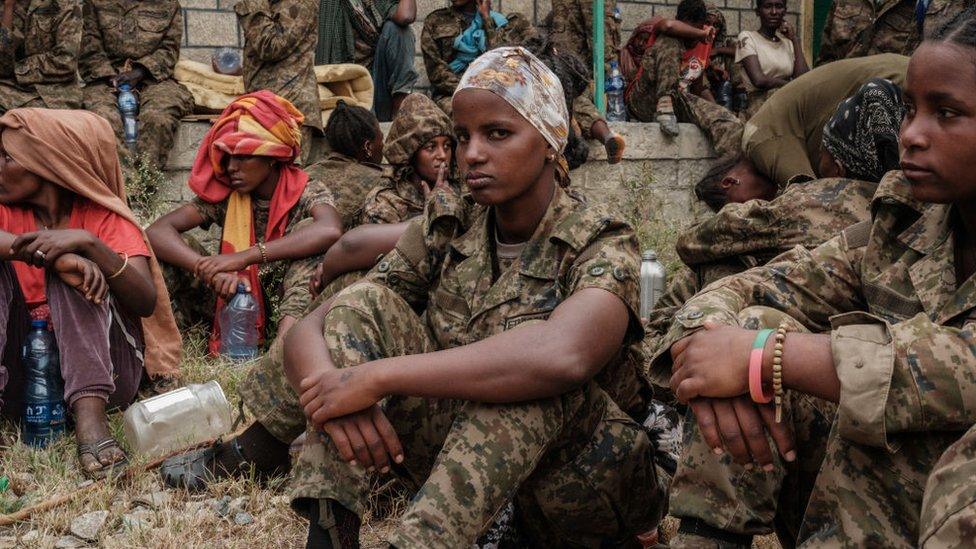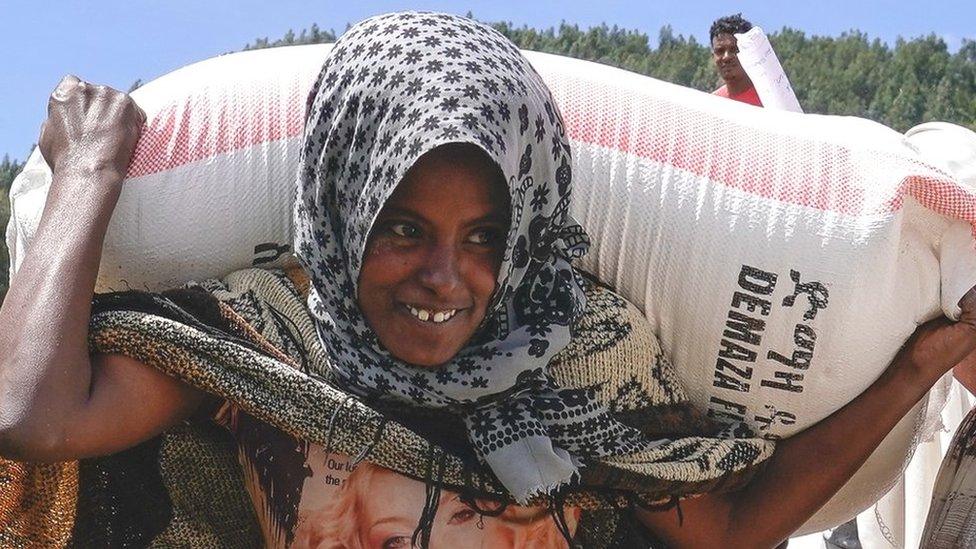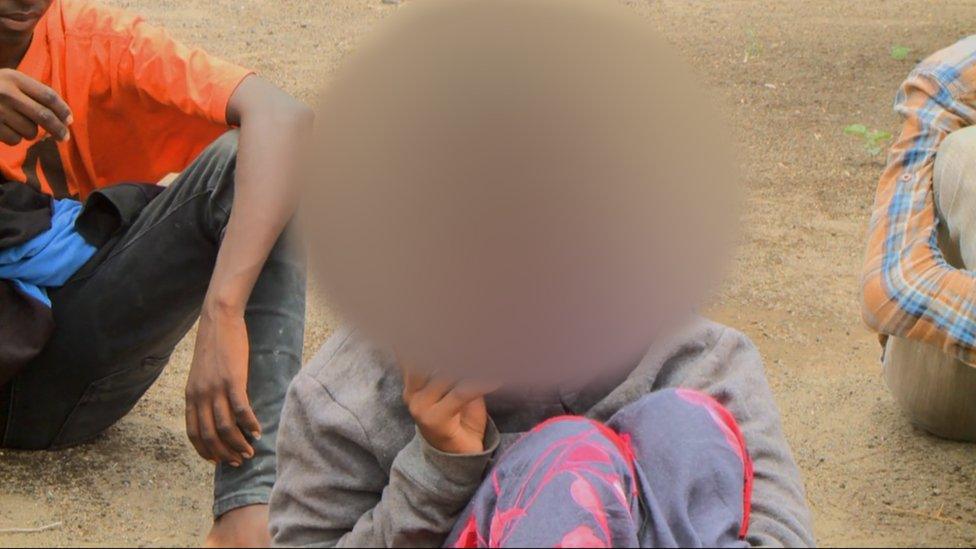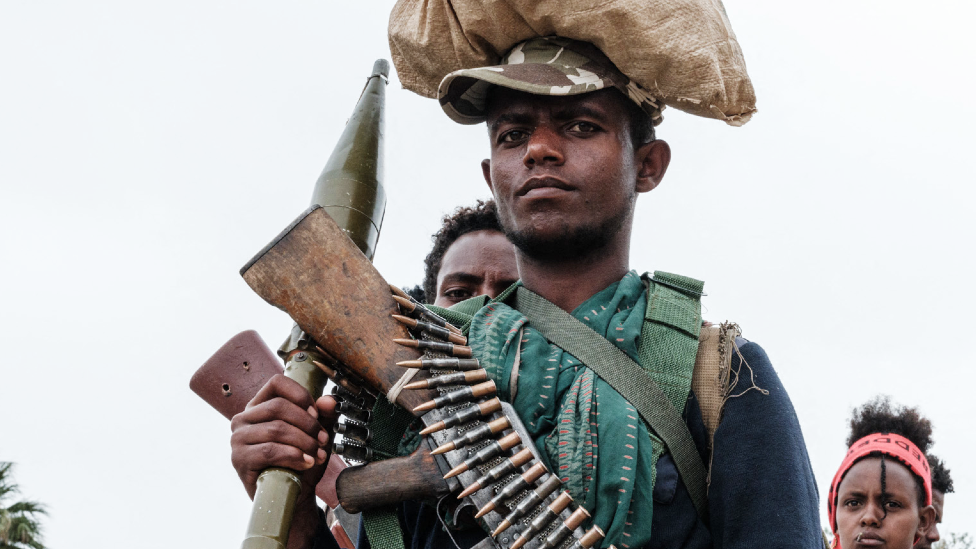Ethiopia's Tigray conflict: Thousands reported killed in clashes
- Published

The conflict between the military and Tigray rebels has been raging for 10 month (file photo)
Thousands have been reported killed in clashes in northern Ethiopia, as fighting between the military and Tigray rebels continues.
The conflict has been raging for 10 months, pushing hundreds of thousands of people into conditions of famine.
The rebel forces said on Sunday that they had killed 3,073 "enemy forces", with 4,473 injured.
It comes after the military said it had killed more than 5,600 rebels, without specifying a timeframe.
Senior army general Bacha Debele said a further 2,300 rebels were wounded and 2,000 captured. Correspondents say the numbers may refer to recent battles.
It is hard to verify figures from either side due to a communications blackout in the region.
The rebels said their figures were from the Afar and Amhara regions which border Tigray, adding that they had seized military tanks and weapons.
Berhane Gebrekristos, Ethiopia's former ambassador to the US, and now a supporter of the rebel Tigray People's Liberation Front (TPLF) group, described the government's claims as "false and laughable".
"The last five or six days, there were major military offensives by the TPLF in the two regions. In Afar and in the Amhara region, they [the Ethiopian military] lost eight divisions," he said.
He accused the military of trying to come up with "fake information" to give a morale boost to its troops.
Lt Gen Debele had earlier accused the TPLF of trying to break up Ethiopia.
He said one rebel division had tried to gain control of the town Humera in Tigray, but had been "completely decimated".


The war began last year, after months of feuding between Prime Minister Abiy Ahmed's government and leaders of the TPLF, the main political party in the Tigray region.
The prime minister sent troops to Tigray to overthrow the regional government after accusing the TPLF of seizing military camps.
The government has designated the TPLF as a terrorist group, while it says it is the legitimate government of Tigray.
Thousands of people are thought to have been killed and millions have been forced from their homes, with some fleeing into Sudan.
Both sides have been accused of committing atrocities, including rape and mass civilian killings.

The expansion of the war
By Kalkidan Yibeltal, BBC Ethiopia correspondent
After the TPLF unexpectedly recaptured most of Tigray from the hands of the army and its aligned forces in June, they managed to advance to neighbouring regions of Amhara and Afar, indicating the expansion of the war.
In the past two weeks the army and its allies appear to have stalled the Tigrayan forces and even pushed them back and regained control of some strategic areas.
But key areas within Afar and Amhara, including the historic town of Lalibela with its Unesco world-heritage rock hewn churches, remain under TPLF control.

On Friday, the UN accused the government of effectively blockading aid supplies to Tigray, warning that millions of lives were being put at risk.
The UN estimates that 5.2 million people need urgent assistance if "the world's worst famine situation in decades" is to be averted. It previously said some 400,000 were already living in famine-like conditions.
But on Saturday, the Ethiopian government said 500 trucks with aid had entered the region, including 152 in the past two days. The number of security checkpoints had also been reduced, it said.
There's been no independent verification of this claim.
The UN had complained that not a single truck had reached Tigray since 22 August, while 100 per day were needed.
More on the Tigray crisis:

Correction: This story was amended on 7 September 2021 to say that the TPLF had recaptured most of Tigray and not all of the region.
- Published6 January 2023

- Published19 August 2021

- Published3 August 2021
